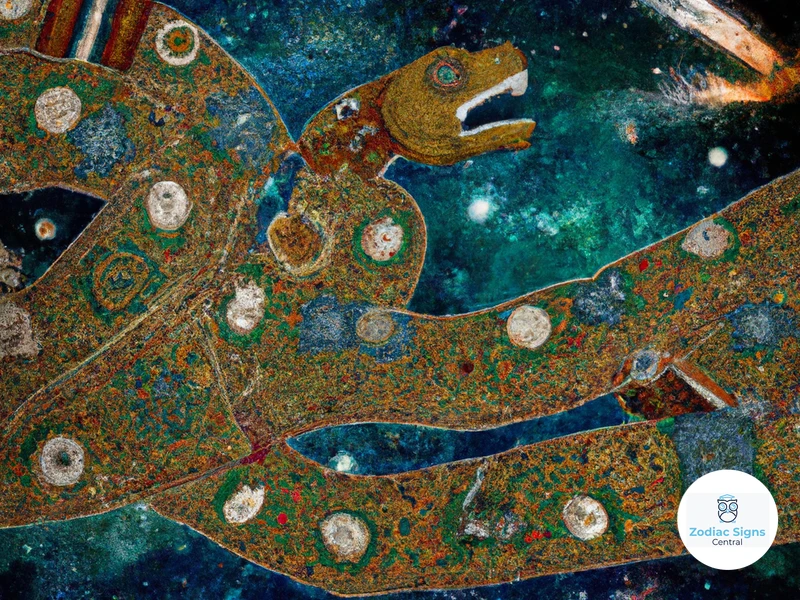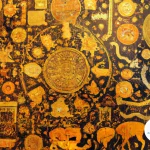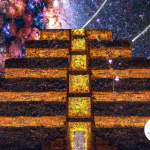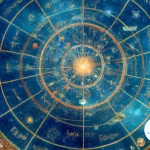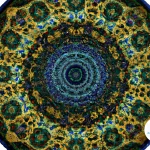Astrological Beliefs in Ancient Mayan Civilizations
Ancient Mayan civilization is known for its rich cultural heritage and ability to accurately predict celestial events. The Mayans had a deep understanding of astrology and its significance, which played a crucial role in their daily lives. In this article, we will explore the astrological beliefs and practices of the Mayan people, including the importance of astrology, the Mayan calendar system, the role of shamanism, interpretations of celestial events, and the significance of astrological signs. We will also delve into the tools and techniques they used for astrology, such as the sacred Mayan calendar and the casting of Mayan horoscopes. Finally, we will discuss the enduring legacy of astrology in modern Mayan culture. Join us on this journey through the mysteries and wonders of astrological beliefs in ancient Mayan civilizations.
Ancient Mayan Civilization: A Brief Overview
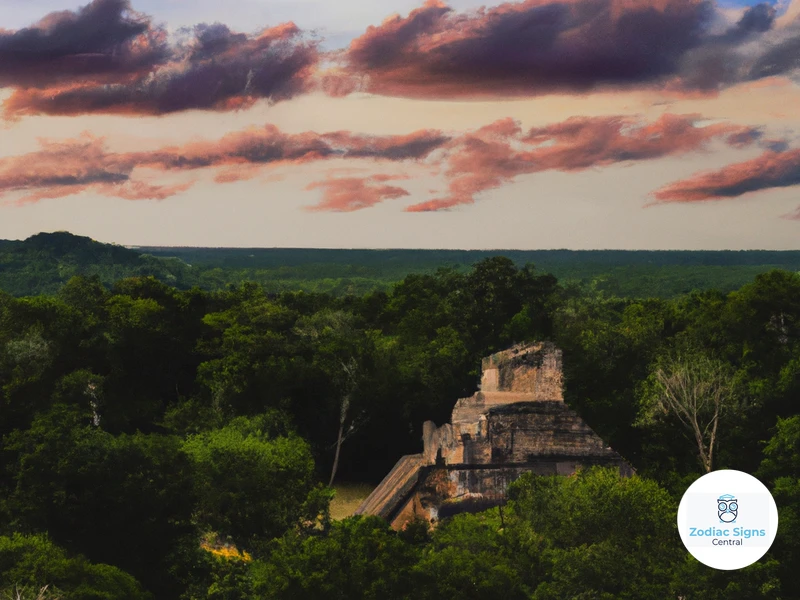
The ancient Mayan civilization, which thrived in Mesoamerica from around 2000 BCE to 1500 CE, was one of the most advanced cultures of its time. The Mayans inhabited a vast area that includes present-day Mexico, Guatemala, Belize, Honduras, and El Salvador. They were renowned for their impressive architectural achievements, advanced writing system, complex mathematical calculations, and astronomical knowledge. The Mayans had a deep connection with the natural world, and their civilization was influenced by their surroundings, including the dense rainforests and towering pyramids. They built magnificent temples, such as the famous El Castillo in Chichen Itza, as places of worship and to study the movements of celestial bodies. Their society was organized into city-states, each with its own ruler and ruling elite. The Mayans developed intricate social, political, and economic systems, and their sophisticated civilization left behind a wealth of art, pottery, hieroglyphic writings, and astronomical observations. Understanding the ancient Mayan civilization and its achievements provides a crucial context for exploring their fascinating astrological beliefs and practices.
Astrology in Mayan Culture
Astrology played a significant role in Mayan culture, with the Mayans firmly believing that celestial events and the positions of the stars and planets held immense power and influence over human lives. Mayan astrology was intricately woven into their daily lives, guiding their decisions and shaping their understanding of the world. They believed that the movements of celestial bodies held the key to unraveling the mysteries of the universe and connecting with the divine. Mayan astrologers were highly regarded and sought after for their ability to interpret celestial phenomena and provide guidance based on their observations. The intricate Mayan calendar system, consisting of multiple calendars, including the Tzolk’in and the Haab, was used to track the movements of celestial bodies and determine auspicious times for important events. Astrology was intertwined with shamanism, as shamans served as intermediaries between the physical and spiritual realms, harnessing celestial energy for healing and divination. Astrology in Mayan culture was a complex and integral part of their belief system, providing a framework for understanding and navigating the world around them.
1. Importance of Astrology
The importance of astrology in the ancient Mayan civilization cannot be overstated. Astrology was deeply ingrained in their culture and played a fundamental role in their daily lives. The Mayans believed that celestial bodies and their movements had a direct impact on human life and the world around them. They saw astrology as a means to understand and interpret these cosmic influences, allowing them to make predictions and decisions based on this knowledge. Astrology was intertwined with various aspects of Mayan society, including agriculture, warfare, and medicine. Mayan farmers used astrology to determine the best times for planting and harvesting crops, ensuring a bountiful harvest. Astrological observations also guided military strategies, with the Mayans believing that celestial events could influence the outcome of battles. Additionally, astrology played a significant role in Mayan healing practices, as they believed that certain celestial alignments were favorable for treating illnesses and performing rituals. The Mayan people held astrologers and priests in high regard, as they were the custodians of this sacred knowledge. The importance of astrology in Mayan society demonstrates the profound impact it had on their culture, shaping their beliefs and influencing their everyday lives. Today, astrology continues to captivate and guide individuals, serving as a tool for self-discovery and understanding the world around us. To learn more about the connection between astrology and self-discovery, you can explore the astrological profiles of superfoods based on your zodiac sign.
2. Mayan Calendar System
The Mayan calendar system was a remarkable achievement and played a significant role in the Mayan civilization’s astrological beliefs. The Mayans had a complex understanding of time and developed multiple calendars to track different cycles. One of the most well-known calendars was the Long Count calendar, which was based on a 260-day cycle known as the Tzolk’in. The Tzolk’in consisted of 20 named days paired with 13 numbers, creating a 260-day cycle. These combinations repeated continuously, providing the basis for divination and determining auspicious dates for various activities. The Haab calendar was another important component of the Mayan calendar system. It was a solar calendar of 365 days divided into 18 months of 20 days each, with the addition of a 5-day intercalary month. The Haab calendar was used for agricultural purposes and tracking seasonal changes. Additionally, the Mayans had a calendar known as the Calendar Round, which combined the Tzolk’in and Haab calendars. This combination resulted in a cycle of 52 years, after which the same Tzolk’in-Haab combination would occur. The Mayans used these calendars to predict celestial events, determine important dates for ceremonies and rituals, and understand the interplay between cosmic cycles and human existence. An in-depth exploration of the Mayan calendar systems provides critical insights into their intricate astrological beliefs and practices.
Sources:
– “Evolutionary Power: Understanding Uranus Transits and Their Impact” – AstroSeek. Available at: /evolutionary-power-uranus-transits-article/
– “Venus in Astrology: Impact on Love, Relationships, and Beauty” – AstroSeek. Available at: /venus-in-astrology-impact/
Astrological Beliefs and Practices
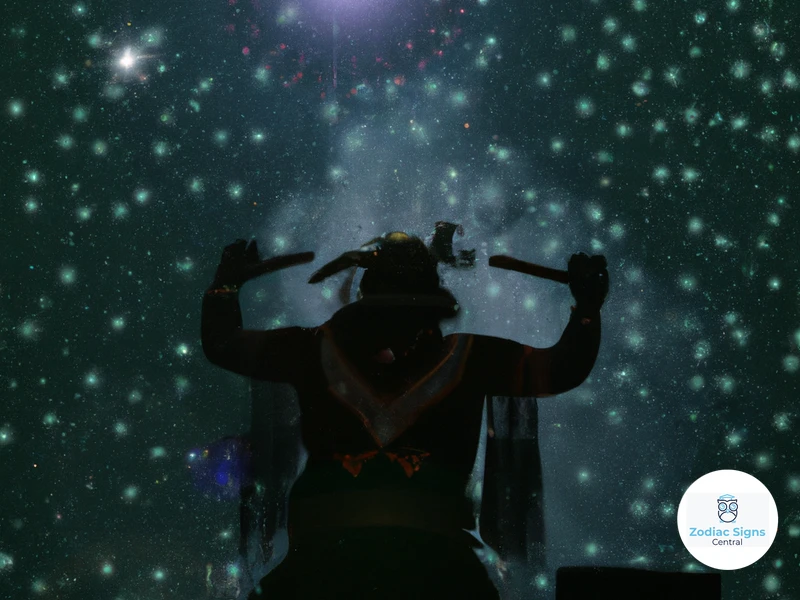
Astrological Beliefs and Practices
Astrology held a significant role in the daily lives and beliefs of the ancient Mayans. They believed that celestial bodies and events had a direct influence on human behavior and the course of their lives. Mayan astrology was closely intertwined with shamanism, with shamans acting as intermediaries between the physical and spiritual realms. The Mayans interpreted celestial events such as eclipses, comets, and conjunctions as messages from the gods, which required careful observation and interpretation. The Mayans also assigned specific meanings and characteristics to the celestial entities, such as the sun, moon, planets, and various constellations. By understanding and interpreting these celestial events, the Mayans believed they could gain insight into the past, present, and future. This deep connection with celestial phenomena played a central role in the daily lives of the Mayan people, guiding their decisions, rituals, and ceremonies.
1. The Role of Shamanism
Shamanism played a vital role in Mayan society and their astrological beliefs. Shamans, known as “ajq’ijab,” were highly respected individuals who served as intermediaries between the human and spiritual realms. They possessed deep knowledge of astrology and were believed to have the ability to communicate with celestial entities and interpret celestial events. Shamans were sought after for their wisdom and guidance in matters of astrology, healing, and divination. They performed rituals and ceremonies to invoke the power of the gods and gain insight into the future. With their extensive knowledge of the stars and planets, shamans were responsible for interpreting celestial signs and aligning them with the destinies of individuals or the community as a whole. They believed that the alignment of celestial bodies influenced human behavior and events on Earth, and by understanding these influences, they could guide their people to make decisions in harmony with the cosmos. Shamanism was a fundamental aspect of Mayan society and their exploration of astrology, providing both spiritual guidance and practical applications for understanding the celestial world.
2. The Influence of Astral Entities
In the Mayan astrological beliefs and practices, the influence of astral entities played a significant role. The Mayans believed that celestial bodies, such as planets and stars, held great power and could affect various aspects of human life. They observed the movements and positions of these astral entities to interpret the messages and predictions they conveyed. The Mayans believed that each astral entity had its own energy and characteristics, which could influence different aspects of human existence, including personalities, emotions, and destinies. For example, the planet Venus was associated with love, beauty, and fertility, while Mars was linked to war and strength. These astral entities were seen as intermediaries between the physical and spiritual realms, and the Mayans believed that by understanding and aligning with their energies, individuals could navigate through life in harmony with the universe. This belief in the influence of astral entities guided various Mayan rituals, ceremonies, and even daily activities, ensuring a balanced connection between the human world and the cosmic forces.
3. Interpretations of Celestial Events
Interpretations of celestial events held great significance in Mayan astrology. The Mayans believed that celestial phenomena, such as solar and lunar eclipses, comets, and the movements of planets, were divine messages from the gods. They carefully observed and interpreted these events to understand their meaning and impact on earthly matters. For example, a solar eclipse was seen as a temporary disruption or loss of light, signaling a potentially negative event or change that could affect the ruling elite or the entire kingdom. Priests and astrologers considered these celestial events in conjunction with the Mayan calendar system to forecast important events, such as wars, famines, or prosperous agricultural seasons. The Mayans believed that certain celestial alignments could grant extraordinary powers to individuals or bring forth catastrophic events. To decipher the messages of celestial events, the Mayans relied on their extensive knowledge of astronomical patterns and their spiritual connection to the gods. Their interpretations of celestial events played a crucial role in guiding their decisions and actions, shaping the Mayan civilization’s destiny.
Significance of Astrological Signs
Astrological signs played a significant role in the ancient Mayan culture, providing guidance and insight into an individual’s personality, traits, and destiny. The Mayans had a deep understanding of the connection between celestial events and human behavior, which they used to interpret the influence of astrological signs. One important aspect of Mayan astrology was the Haab calendar, which consisted of 19 signs, each associated with a specific time period. These signs were believed to hold distinct characteristics and energies that influenced an individual’s life. These astrological signs were not just limited to individuals; they also corresponded to the four cardinal directions – north, south, east, and west – creating an alignment of crossroads. Understanding the significance of astrological signs allows us to delve deeper into the worldview and beliefs of the ancient Mayan civilization, providing a glimpse into how they saw themselves and their place within the cosmos.
1. The Haab Calendar and the 19 Signs
The ancient Mayan astrological system was deeply rooted in their complex calendar system. One of the key components of this system was the Haab calendar, also known as the solar calendar. The Haab calendar consisted of 18 months, each lasting 20 days, making a total of 360 days. To complete the year, the Mayans added an extra month called “Wayeb” consisting of only 5 days. This resulted in a 365-day calendar, which closely corresponds to the solar year.
Within the Haab calendar, there were 19 different astrological signs, referred to as the “uinals.” Each uinal represented a specific period of 20 days within a month. These signs played a significant role in Mayan astrology, as they were used to determine various aspects of an individual’s personality, strengths, and weaknesses. The 19 uinals were associated with different natural elements and animals, providing a rich symbolism that reflected the Mayan’s deep connection with nature.
Here is a list of the 19 uinals and their corresponding symbols:
1. Pop (Mat) – Crocodile
2. Uo (Vayeb) – Wind
3. Zip (Chuen) – Jaguar
4. Zotz (Yax) – Bat
5. Tzec (Zac) – Deer
6. Xul (Ceh) – Dog
7. Yaxkin (Mak) – Serpent
8. Mol (Kankin) – Owl
9. Chen (Muuan) – Monkey
10. Yax (Pax) – Parrot
11. Zac (Kayab) – Rabbit
12. Ceh (Cumku) – Eagle
13. Mac (Uayeb) – Vulture
14. Kankin (Pax) – Quail
15. Muan (Kayab) – Turtle
16. Pax (Cumku) – Lizard
17. Kayab (Uayeb) – Scorpion
18. Cumku (Xul) – Spider
19. Uayeb (Zip) – Water
Each of these uinals held its own unique energy and characteristics, contributing to a comprehensive understanding of an individual’s astrological profile. Through the Haab calendar and its 19 signs, the Mayans developed a complex and intricate system of astrology that provided insights into various aspects of life, destiny, and personality.
2. Characteristics of Each Sign
The Mayan astrological signs, known as the Haab Calendar, are based on a 19-month cycle, each with its unique characteristics and symbolism. Let’s explore the characteristics of each sign:
1. Pop (Ahau): Individuals born under this sign are natural leaders. They possess charisma, self-confidence, and a strong desire for success. They are often creative, artistic, and have a deep connection to nature.
2. Uo (Imix): Those born under this sign are compassionate and empathetic. They have a nurturing nature and are usually good caretakers. They are also known for their strong intuition and ability to understand others.
3. Zip (Ik): People born under this sign are independent and adventurous. They have a thirst for knowledge and are constantly seeking new experiences. They possess great intellectual abilities and are often successful in academic pursuits.
4. Zotz (Akbal): The individuals with this sign are mysterious and introspective. They have a deep understanding of human emotions and the subconscious mind. They are often drawn to spiritual practices and have a strong connection to the unseen realms.
5. Tzec (Kan): Those born under this sign are known for their physical strength and resilience. They possess great determination and are incredibly hardworking. They are often successful in careers that require physical endurance.
6. Xul (Chicchan): People with this sign are highly intuitive and possess strong healing abilities. They are often drawn towards holistic practices and have a deep connection to the earth. They are also known for their passion and sensuality.
7. Yaxkin (Cimi): This sign represents transformation and change. Those born under this sign are adaptable and possess great problem-solving skills. They are often seen as the mediators and peacemakers in their communities.
8. Mol (Manik): Individuals with this sign are known for their reliability and practicality. They are often skilled craftsmen and have a strong sense of responsibility. They are also natural caregivers and often take on leadership roles.
9. Chen (Lamat): People born under this sign are charismatic and often have a natural magnetism. They possess great creativity and are often drawn to artistic pursuits. They have a love for beauty and luxury.
10. Yax (Muluc): This sign represents emotional sensitivity and spirituality. Individuals born under this sign are highly empathetic and have a deep connection to their emotions and the emotions of others. They often pursue spiritual practices and have a desire to help others.
11. Zac (Oc): Individuals with this sign are known for their strong sense of justice and fairness. They possess great diplomatic skills and are often engaged in social and political causes. They have a natural ability to bring people together.
12. Ceh (Chuen): Those born under this sign are creative and have a unique sense of humor. They possess great artistic abilities and are often seen as entertainers. They have a zest for life and a positive outlook.
13. Mac (Eb): This sign represents individuality and independence. People born under this sign are often trailblazers and are not afraid to go against the crowd. They possess great inner strength and are natural leaders.
14. Kankin (Ben): Individuals with this sign are known for their stability and practicality. They have a strong work ethic and are often successful in business and finance. They are reliable and dependable.
15. Muan (Ix): Those born under this sign have a deep connection to nature and possess strong intuitive abilities. They are often drawn to spiritual practices and have a desire to heal the earth. They are often seen as wise and knowledgeable.
16. Pax (Men): This sign represents balance and harmony. Individuals born under this sign are often seen as the peacemakers and problem solvers in their communities. They have a natural ability to bring people together and create unity.
17. Kayab (Cib): People with this sign are known for their strong sense of justice and morality. They possess great integrity and are often engaged in social justice causes. They have a desire to make a positive impact on the world.
18. Cumku (Caban): Those born under this sign are adventurous and possess a thirst for knowledge. They are often curious and have a desire to explore the world. They are open-minded and are constantly seeking new experiences.
19. Uayeb: Uayeb represents a five-day period at the end of the year in the Mayan calendar. People born during this time are often seen as mysterious and unique. They possess a deep spiritual connection and have a profound understanding of the cycles of life and death.
Each Mayan astrological sign holds its own significance and offers valuable insights into an individual’s personality and life path. It is fascinating to explore the characteristics and symbolism associated with each sign and discover how they influenced Mayan culture and beliefs.
3. The Aligned Crossroads: The Four Cardinal Directions
The Mayans placed great importance on the alignment of the four cardinal directions – north, south, east, and west. These directions were believed to be interconnected with various aspects of life and the cosmos. Each direction held its own significance and symbolized different elements. The alignment of the four cardinal directions was often represented in Mayan artwork and architecture. For example, the design of many Mayan temples and structures showcased the four sides facing the cardinal directions, emphasizing harmony and balance. The north was associated with wisdom, knowledge, and the color white, while the south represented change, growth, and the color yellow. The east was linked to new beginnings, enlightenment, and the color red, while the west symbolized transformation, introspection, and the color black. This alignment of the four cardinal directions played a crucial role in Mayan astrology, as it influenced their understanding of celestial events and their interpretations of the movement of stars and planets. By recognizing and honoring the interconnectedness of the cardinal directions, the Mayans sought to align themselves with the natural and cosmic forces surrounding them, allowing them to navigate through life’s journey with wisdom and harmony.
Mayan Astrological Tools and Techniques

Mayan Astrological Tools and Techniques
The Mayans developed various tools and techniques to study and interpret celestial events, which formed the basis of their astrology. One of the most important tools was the Tzolk’in, also known as the Sacred Mayan Calendar. This calendar consisted of 260 days, with each day associated with a unique combination of a number and a glyph. The Tzolk’in played a crucial role in determining auspicious days for important events and ceremonies. Another significant technique was the casting of Mayan horoscopes, which involved the use of a complex system of calculations based on birth dates and the Tzolk’in calendar. These horoscopes provided insight into an individual’s personality traits, strengths, and weaknesses. Additionally, the Mayans used sacred symbols, such as glyphs and hieroglyphs, to represent different aspects of astrology. These symbols were inscribed on artifacts, temples, and codices, and were believed to possess spiritual power and provide guidance in interpreting celestial events. The combination of the Tzolk’in calendar, horoscope casting, and sacred symbols allowed the Mayans to navigate and understand the intricate world of astrology in their civilization.
1. The Tzolk’in: The Sacred Mayan Calendar
The Tzolk’in, also known as the Sacred Mayan Calendar, was a fundamental astrological tool used by the ancient Mayans. It was a unique and intricate system that played a vital role in Mayan society. The Tzolk’in consisted of 260 days and was based on the alignment of two separate calendars: a 13-day cycle and a 20-day cycle. These cycles ran concurrently, creating a calendar of 260 unique combinations.
The calendar was divided into 20 periods, each lasting 13 days, with each period represented by a specific combination of a number and a day sign. The day signs were significant celestial entities or forces such as the sun, moon, jaguar, serpent, and more. Each combination of number and day sign had its own specific meaning and symbolism within Mayan astrology. This complex calendar was used to determine auspicious days for various activities, including religious ceremonies, agricultural practices, and personal events like births and marriages.
To further complicate matters, the Tzolk’in was also connected to another Mayan calendar called the Haab. The Haab was a solar calendar consisting of 365 days, divided into 18 months of 20 days each, with an additional period of 5 days at the end. The combination of the Tzolk’in and the Haab created an even more precise system for tracking time and astrological events.
The Tzolk’in was not just a practical tool for timekeeping but was also deeply intertwined with Mayan mythology and cosmology. It was believed that each day had its own unique energy and that the combination of day signs and numbers influenced individuals’ characteristics and destiny. The Tzolk’in helped the Mayans navigate their lives, make important decisions, and connect with the divine forces they believed governed the universe.
The Tzolk’in was a complex and sacred astrological calendar that played a central role in Mayan astrology and spirituality. Its intricate combination of day signs and numbers provided a guide for understanding the energies and influences of each day, ensuring the Mayans were in harmony with the celestial forces that shaped their existence.
2. Casting Mayan Horoscopes
Casting Mayan horoscopes was an integral part of Mayan astrology and played a significant role in understanding an individual’s destiny and personality traits. The process of casting a Mayan horoscope involved several steps and calculations.
1. Birth Date: The first step in casting a Mayan horoscope was determining the individual’s birth date according to the Mayan calendar system, which consisted of the Tzolk’in and the Haab calendars. The Tzolk’in calendar was a 260-day cycle, while the Haab calendar was a 365-day solar calendar. By combining the two calendars, astrologers could pinpoint the exact birth date.
2. Calculation of Day Sign: Once the birth date was determined, the astrologer would identify the day sign associated with that specific date. The Tzolk’in calendar consisted of 20 day signs, each with its own unique characteristics and symbolism.
3. Zodiacal Houses: After identifying the day sign, the astrologer would determine which zodiacal house it fell under. The Mayans divided the sky into four quadrants, known as the Four Cardinal Directions: north, south, east, and west. Each quadrant represented specific aspects of an individual’s life, such as family, career, relationships, and spiritual pursuits.
4. Interpretation: With the day sign and zodiacal house determined, the astrologer would interpret the combination to provide insights into the individual’s personality, strengths, weaknesses, and potential life path. This interpretation would also consider the influence of astral entities and celestial events.
Casting Mayan horoscopes was not only used for personal guidance but also played a role in important decisions in the Mayan society, such as choosing suitable marriage partners, determining auspicious times for ceremonies and events, and even making political decisions. It was believed that by understanding the unique qualities and destiny of an individual, they could align themselves with the cosmic forces and live a more fulfilling life.
3. The Use of Sacred Symbols
The Mayans placed great importance on the use of sacred symbols in their astrological practices. These symbols were believed to possess spiritual power and were used as a means to communicate with the divine. One such symbol is the “Geb,” which represents the earth and is associated with fertility and growth. The Geb symbol was often used in rituals and ceremonies related to agriculture and the harvest, as the Mayans believed in the interconnectedness of the earth and human life. Another powerful symbol is the “Kin,” which represents the sun and symbolizes strength and vitality. The Kin symbol was often incorporated into rituals and ceremonies to honor the sun and its life-giving energy. Additionally, the Mayans used symbols such as the “Ix,” which represents the feminine and is associated with the moon and fertility. This symbol was often used in rituals related to childbirth and female deities. The use of these sacred symbols in Mayan astrology not only served as visual representations but also acted as a conduit to connect with the spiritual realm and understand the celestial influences on human life. By interpreting and understanding these symbols, Mayan astrologers could gain insights into various aspects of an individual’s life, such as their personality traits, destiny, and potential pitfalls. The use of sacred symbols continues to hold significance in modern Mayan culture, where they serve as a reminder of the ancient wisdom and spiritual connection to the cosmos.
Enduring Legacy: Astrology in Modern Mayan culture
Astrology continues to have a significant impact on modern Mayan culture, demonstrating the enduring legacy of ancient Mayan astrological beliefs. While the ancient Mayan civilization declined centuries ago, their astrological practices and beliefs have been preserved and continue to be practiced by contemporary Mayan communities.
1. Traditional Mayan healers, known as “curanderos” or “jamanes,” often incorporate astrology into their healing and spiritual practices. They use astrology to diagnose illnesses, provide guidance for spiritual rituals, and offer insight into an individual’s life path and purpose. This integration of astrology with traditional healing practices highlights the ongoing importance and relevance of astrology in modern Mayan culture.
2. Mayan communities also celebrate and pay homage to celestial events and astrological phenomena. The observation of solstices, equinoxes, and other astronomical alignments remain integral parts of modern Mayan religious ceremonies and festivals. These events serve as opportunities for Mayan communities to connect with their ancestral heritage and express gratitude to the cosmos.
3. Additionally, astrology plays a role in guiding important decisions and understanding individual characteristics. Mayans still consult astrologers and Mayan calendar experts for advice on matters such as marriage, career choices, and personal development. Astrology is seen as a tool for self-awareness, enhancing the understanding of personal strengths and weaknesses, and navigating life’s challenges.
The enduring legacy of astrology in modern Mayan culture is a testament to the deep-rooted beliefs and practices that have been passed down for generations. It is a unique blend of ancient Mayan wisdom and contemporary spirituality, creating a profound connection to the cosmos and a source of guidance for Mayan individuals and communities today.
Conclusion
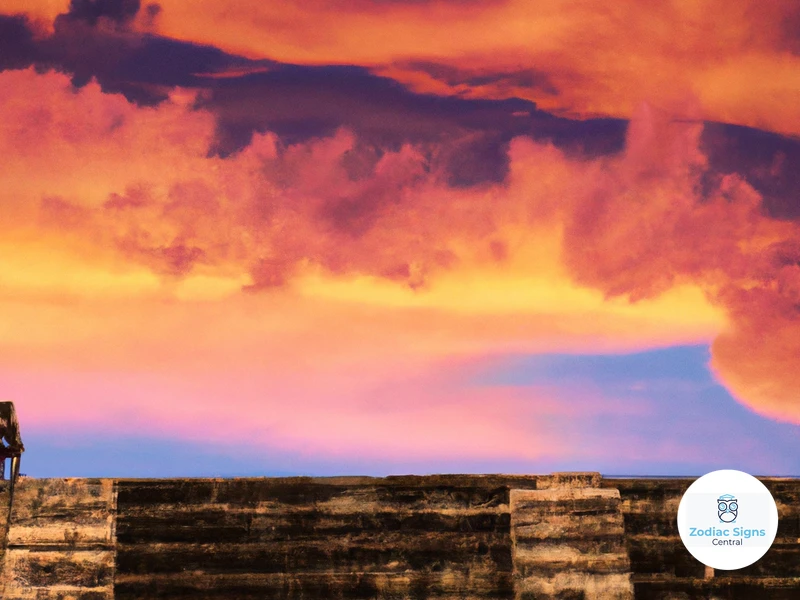
In conclusion, the astrological beliefs in ancient Mayan civilizations were deeply ingrained in their culture and influenced various aspects of their lives. Mayans recognized the importance of astrology and developed a sophisticated calendar system to track celestial events. Shamanism played a significant role in their astrological practices, connecting them to astral entities and allowing for interpretations of celestial events. The Mayans also assigned great significance to astrological signs and the four cardinal directions, believing they held power and symbolism. They used tools such as the Tzolk’in calendar and sacred symbols to cast horoscopes and gain insights into the future. While the ancient Mayan civilization eventually declined, their astrological practices have left an enduring legacy in modern Mayan culture. Today, Mayan astrology continues to be revered by many, offering guidance and insights into personal and global events. The study of astrological beliefs in ancient Mayan civilizations provides a fascinating glimpse into the profound connection between the cosmos and the human experience.
Frequently Asked Questions
1. What were the major achievements of the ancient Mayan civilization?
The ancient Mayan civilization had several major achievements, including their advanced writing system, complex mathematical calculations, impressive architectural structures, and astronomical knowledge. They also developed intricate social, political, and economic systems.
2. How did astrology play a role in Mayan culture?
Astrology held great significance in Mayan culture. It formed the basis of their calendar system, helped in interpreting celestial events, and influenced their religious and spiritual beliefs. The Mayans believed that celestial bodies had a direct impact on human lives and the world around them.
3. What is the Mayan calendar system and how is it different from the Gregorian calendar?
The Mayan calendar system was a highly accurate and complex system used by the Mayans to track time and celestial events. Unlike the Gregorian calendar, which is solar-based, the Mayan calendar combined solar and lunar cycles. It had different cycles, including the Tzolk’in (sacred calendar) and the Haab (civil calendar), which together formed a 52-year Calendar Round.
4. What was the role of shamanism in Mayan astrology?
Shamanism played a crucial role in Mayan astrology. Shamans were spiritual leaders and healers who communed with the spiritual realm and acted as intermediaries between gods, humans, and celestial entities. They used astrology in their practices to gain insight, provide guidance, and perform rituals.
5. How did Mayans interpret celestial events?
The Mayans believed that celestial events such as eclipses, planetary alignments, and solstices held deep spiritual and symbolic meaning. They interpreted these events as messages from the gods, often associating them with agricultural cycles, rituals, and predictions for the future.
6. What are the characteristics and significance of each astrological sign in Mayan astrology?
In Mayan astrology, each sign in the Haab calendar represents specific characteristics and qualities. For example, the sign of the “Crocodile” represents leadership and fertility, while the “Jaguar” signifies power and mysticism. Each sign has its unique symbolism, which influenced various aspects of Mayan life and culture.
7. How did Mayans cast horoscopes?
Mayans cast horoscopes by using a combination of astrological symbols, the Tzolk’in calendar, and personal information about an individual, including their birth date and time. They believed that these horoscopes provided insights into the person’s character, destiny, and compatibility with others.
8. What were the sacred symbols used in Mayan astrology?
The Mayans used various sacred symbols in their astrology, each carrying its own significance. Some common symbols included glyphs representing deities and celestial bodies, as well as animals like jaguars and serpents, which held spiritual importance in Mayan mythology.
9. How is astrology still practiced in modern Mayan culture?
Astrology continues to hold significance in modern Mayan culture, especially among Mayan communities in Guatemala and Mexico. Many traditional practices, such as horoscope readings and the use of the Mayan calendar, are still followed by Mayan spiritual leaders and individuals seeking guidance.
10. How has the ancient Mayan civilization influenced astrology in other cultures?
The ancient Mayan civilization’s astrological knowledge and practices have influenced contemporary astrology, particularly in the Western world. The Mayan calendar and its associations with celestial events have inspired further exploration of astrology’s impact on human life, personal characteristics, and spiritual growth.
References
Frequently Asked Questions
1. How did astrology play a role in everyday life for the Mayans?
Astrology was deeply ingrained in the Mayan culture, influencing various aspects of their daily life such as agriculture, warfare, and religious ceremonies. It was used as a tool for decision-making, determining auspicious times for important events, and understanding the influence of celestial entities on human life.
2. What was the significance of the Mayan calendar system in relation to astrology?
The Mayans had an intricate calendar system that was closely linked to their astrological beliefs. It consisted of two main calendars, the Tzolk’in and the Haab, which together formed a unique and comprehensive framework for tracking celestial events and predicting astrological phenomena.
3. How important was shamanism in Mayan astrology?
Shamanism played a significant role in Mayan astrology as the shamans were considered the intermediaries between the physical and spiritual realms. They possessed the ability to communicate with astral entities and interpret celestial signs, providing guidance and insights to the Mayan people.
4. What influence did astral entities have on Mayan astrology?
The Mayans believed that astral entities, such as deities and celestial beings, had a profound influence on human destiny and the course of events on Earth. They attributed specific qualities and characteristics to these entities, which were considered during astrological interpretations and rituals.
5. How did the Mayans interpret celestial events through astrology?
The Mayans interpreted celestial events, such as eclipses, comets, and planetary alignments, as significant omens and signs from the astral entities. They believed that these events carried messages and indicators of important events or shifts in the cosmic balance, which were then interpreted by the astrologers.
6. What were the 19 signs of the Haab calendar and what significance did they hold?
The Haab calendar, consisting of 19 signs, represented the annual cycle of the Mayan agricultural year. Each sign was associated with specific qualities and characteristics, influencing aspects such as personality traits, agricultural practices, and societal events throughout the year.
7. What were the characteristics associated with each Mayan astrological sign?
Each Mayan astrological sign had unique attributes and characteristics attributed to it. For example, the sign of Imix was associated with creativity and intuition, while Ik symbolized the essence of the wind and change. These characteristics influenced the traits and destinies of individuals born under these signs.
8. How did the Mayans view the four cardinal directions in astrology?
The Mayans considered the four cardinal directions (north, south, east, and west) as significant crossroads that aligned with specific astrological signs. These alignments were believed to influence various aspects of life, such as personal traits, compatibility, and even the selection of auspicious dates for important events.
9. How was the Tzolk’in calendar used as a sacred Mayan astrological tool?
The Tzolk’in calendar was regarded as a sacred Mayan astrological tool that focused on a 260-day cycle. It was used to determine individual birth signs and their corresponding energies, providing insights into one’s personality, traits, and compatibility with others.
10. What role did sacred symbols play in Mayan astrology?
Sacred symbols held great importance in Mayan astrology as they were believed to carry spiritual and cosmic meanings. These symbols were used in various astrological rituals, divination practices, and as visual representations of specific celestial beings or energies.
References
- Maya astronomy
- Ancient Mayan Astronomy – History of …
- How did the Mayan civilization achieve such remarkable …
